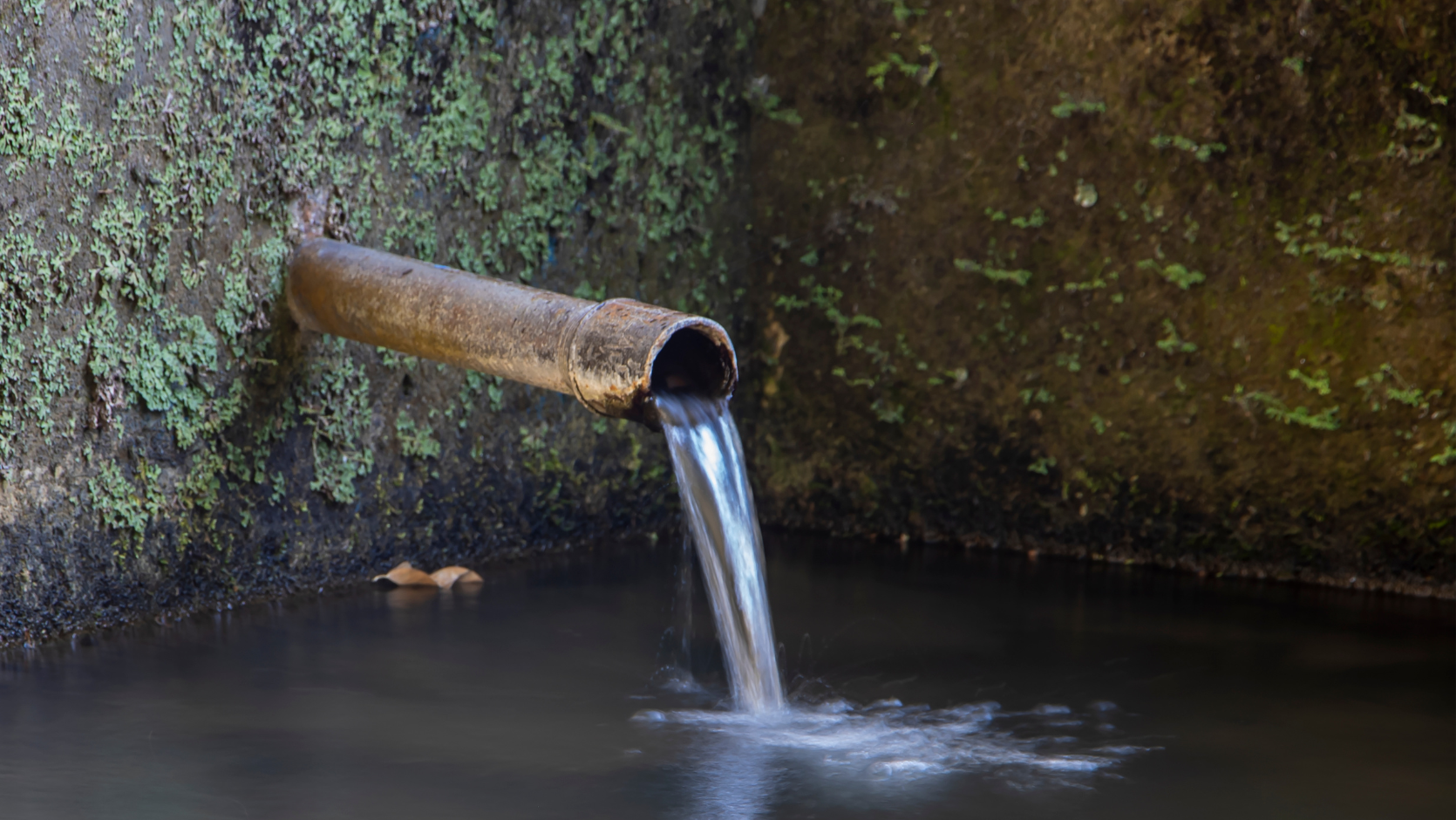The Facts
Blocked stormwater pipe causes flooding of Sydney property
A Sydney property was bought in 1989. The buyer was unaware of a stormwater pipe that ran under the property.
The pipe was owned by the local council and had been in existence since about 1904. It had significantly deteriorated over time and had become blocked.
During heavy rainfall, the pipe was no longer effective to drain stormwater from the street. The backed-up water would pool until it inundated the property.
Council abandons resolution to fix pipe and create easement
The council realised it would need to fix or replace the pipe and create a drainage easement to reduce the impact stormwater was having on this property and the adjoining landowners.
In 2002, council passed a resolution to either negotiate the creation of an easement over the existing pipeline with the seller, or otherwise compulsorily acquire an easement to rectify the stormwater problem on the property.
Although there were discussions about the creation of an easement between the parties over a number of years, negotiations between the property owner and the council broke down.
Shortly after, council notified the owner that it no longer intended to compulsorily acquire an easement. The pipe remained in a state of disrepair.
Property sold to unsuspecting buyer
In 2011 the owner sold the property to an unsuspecting buyer. Soon after the transaction was finalised, the property was impacted by stormwater on nine separate occasions. The council advised the buyer that the property was flooding because the pipe had effectively collapsed.
The stormwater pipe carried wastewater and effluent which had an offensive smell and left a polluted residue. Completely disenchanted, the buyer revisited prior communication with the seller and the council.
“The purchaser should make their own enquiries”
During the transaction, the buyer asked the seller if they were aware of any unregistered easements which affect the property, or if any part of the land was to be resumed.
The purchaser also inquired if the seller had received any notification, claim or requirement by a local authority, or if they were aware of any restriction on the use or development of the land.
The seller’s response to these questions was “no” and that “the purchaser should make their own enquiries”. The seller remained silent regarding their awareness of the pipe and the fact that it caused the property to flood.
Council fails to divulge existence or impact of collapsed stormwater pipe
Similarly, the council did not disclose its awareness of the impact of the stormwater pipe on the property, nor did the planning certificate attached to the contract disclose the council’s resolution to create an easement.
The planning certificate stated whether the land was affected by a policy adopted by the council and whether the land was subject to flood-related development controls, or a restriction on the development of the land because of the likelihood of flooding.
The council’s response to these questions was “no”.
The planning certificate also provided “advice on other matters affecting the subject land of which council is aware…”. The council’s response to this point was also “no”.
The council did not disclose the existence of the stormwater pipe, the council’s ownership of it or the council’s knowledge that the pipe regularly caused the property to flood.
Council’s attempts to mitigate damage
The flooding caused significant damage to the improvements on the land. Council employees installed a pump to redirect the stormwater flow away from the carport, garage and house. However, the council had to start the pump manually and at times did not arrive in time to “flick the switch”.
The council subsequently repaired the pipe and undertook remedial landscaping of the property. No further flooding occurred after the pipe was repaired.
The buyer brought a claim against the seller and the council for negligent misstatement and in nuisance for the damage caused by the flooding.














Expert commentary on the court's decision
Buyer of property with stormwater pipe wins in Supreme Court
Initially, the purchaser, Elisa Lorenzato, was successful in the Supreme Court against the seller, Michael Della Franca, and Burwood Council. (See Lorenzato v Burwood Council [2020] NSWSC 1659.)
The Supreme Court found that the council breached its common law duty to exercise reasonable care when issuing the planning certificate. Justice Fagan also held the council liable for the damage caused by the flooding and said it could not rely on the statutory immunity provided by the Local Government Act 1993.
The court also found against Mr Della Franca for negligent misstatement to the requisitions raised by Ms Lorenzato.
Burwood Council was ordered to pay a little over $2 million in damages to Ms Lorenzato. Mr Della Franca was ordered to pay her over $1.9 million in damages.
Both Mr Della Franca and Burwood Council were required to pay Ms Lorenzato’s legal costs of proceedings.
However, this decision was later overturned by the Court of Appeal in the matter Della Franca v Lorenzato; Burwood Council v Lorenzato [2021] NSWCA 321.
Council and property seller appeal Supreme Court decision
Burwood Council’s appeal was threefold: first, that the resolution did not constitute a policy; secondly, that the land was not technically subject to flood-related development controls; and thirdly, that the council was not required to disclose its awareness of the stormwater pipe on the property.
Mr Della Franca’s appeal was primarily based on whether the responses to the requisitions raised were misleading. The court found that Mr Della Franca was not required to disclose the council’s ownership of the pipe, or that the council resolution had been abandoned, but only whether there were any outstanding matters with Burwood Council, which there were not.
The court also considered that the non-answer to a requisition such as “the purchaser should make their own enquiries” cannot be regarded as incorrect or misleading.
Resolution “not a policy” and abandoned by council
The Court of Appeal found that the council’s resolution was not a policy, because it was not a generic statement of guidelines, principles or criteria. Instead, it was regarded as an operative decision in relation to a specific subject.
The court said that even if the resolution constituted a policy, it would not restrict the development of the land because of flooding. In any event, the court held that the resolution was considered abandoned by the time the planning certificate was issued by the council.
Drainage easements are not flood-related development controls
The Court of Appeal agreed with the primary judge that flood-related development controls are restrictions based on a property’s proximity to flood-prone land.
The creation and preservation of drainage easements are not to be considered flood-related development controls. For this reason there was no misstatement in the planning certificate issued by the council.
Council’s non-disclosure of stormwater pipe not considered negligent
The Court of Appeal held that council did not have a duty of care to openly divulge information about the pipe in the planning certificate. It was said that liability would only arise if the information it was required to or chose to provide was incorrect or misleading.
Therefore, the non-disclosure of the pipe was not considered negligent. Consequently, the council was exempt from liability under section 733 of the Local Government Act.
Property buyer loses appeal and saddled with significant legal costs
The Court of Appeal set aside the orders made by the Supreme Court. Ms Lorenzato was able to keep the $83,846.44 against Burwood Council associated with the nuisance claim, as it was not challenged on appeal.
However, she was ordered to pay Burwood Council half of the council’s costs at first instance, plus the costs on appeal, plus pay Mr Della Franca’s costs at first instance and on appeal.
Justice vs law
To the lay person, it may seem outrageously unjust that a buyer can find themselves in possession of a seriously defective property, while the council can be held to have zero responsibility to divulge the existence of such defects, even when it owns the source of the problem.
The case is a huge win for councils in NSW. It sets a precedent that councils will not be required to disclose site-specific information in a planning certificate attached to a contract.
A planning certificate may only serve as a guide toward further investigation of a specific matter in relation to property. Even then, encumbrances may go undetected, and this case reinforces the difficulty in pursuing council.
Certainly, the award of legal costs against the hapless buyer in this case may act as a deterrent to others who are considering suing a local council in future, no matter how blatantly unfair its behaviour may appear to be.
Due diligence and title insurance may be your best bet
There are inherent risks with every transaction. The dictum caveat emptor, or buyer beware, is never more relevant than when you are considering buying property.
The more comprehensive your due diligence, the better. That said, even the most comprehensive of due diligence enquiries may not be able to show all of the matters that affect a property.
Perhaps a plumbing or underground scanning inspection could have been done to reveal the existence of the stormwater pipe in this case, but would a buyer be able to get that done in the five business day cooling-off period, or other reasonable time set for a “subject to pest and building report” clause?
In any case, the speed of contemporary property transactions can make comprehensive due diligence difficult. If one buyer is unwilling to take the risk, there is always another who is ready and willing.
For those property buyers who are risk averse, one option is to take out title insurance, which may cover an unregistered easement over a property.
However, even this is not a cast-iron guarantee, as any claim would ultimately be assessed on a case-by-case basis by the insurer’s claims department.